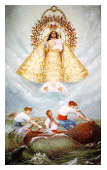- Contact Us
- Careers
- Policies
- About Us
- Events
- Parishes
- Schools
- Ministries
- The Office of Black Catholic Ministries
- Hispanic Ministry
- Charismatic Renewal
- Marriage & Family Life
- College Campus Ministry
- Miscarriage Ministry
- Prayer Ministry
- Deaf Ministry
- Prison Ministry
- Disabilities Ministry
- Divine Worship
- Divorce Support
- Faith Formation
- Grief Ministry
- Mental Wellness Resources
- Respect Life
- Seek the City to Come
- Young Adult Ministry
- Youth Ministry
- LGBT Pastoral Accompaniment
- Vocations
- myArch
- Outlook365
- Ethics Hotline
- Giving
- Promise to Protect

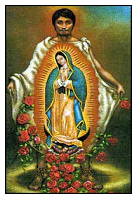 The celebration of Our Lady of Guadalupe brings to mind the image of the woman of the Book of Revelation, pregnant with new life and a new world. The image of this woman is remarkably similar to that of Guadalupe: “A woman clothed in the sun, with the moon under her feet, and a crown of twelve stars on her head”. Besides, this is a pregnant woman -like Guadalupe-whose fruit the dragon is waiting to devour. God saves the woman and takes her way before the dragon can do any harm to the child. This is a most powerful symbol of hope for the world, particularly on this very tragic year. It is the hope that Mary of Guadalupe came to bring not only to Mexico, but to the whole American continent.
The celebration of Our Lady of Guadalupe brings to mind the image of the woman of the Book of Revelation, pregnant with new life and a new world. The image of this woman is remarkably similar to that of Guadalupe: “A woman clothed in the sun, with the moon under her feet, and a crown of twelve stars on her head”. Besides, this is a pregnant woman -like Guadalupe-whose fruit the dragon is waiting to devour. God saves the woman and takes her way before the dragon can do any harm to the child. This is a most powerful symbol of hope for the world, particularly on this very tragic year. It is the hope that Mary of Guadalupe came to bring not only to Mexico, but to the whole American continent.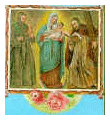
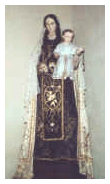 Years after her death, a Carmelite friar decided to erect a temple in honor of Our Lady or Mount Carmel on the place of Huillac’s death. Since then, the place became a center of pilgrimage for the natives, and the devotion spread throughout Chile.
Years after her death, a Carmelite friar decided to erect a temple in honor of Our Lady or Mount Carmel on the place of Huillac’s death. Since then, the place became a center of pilgrimage for the natives, and the devotion spread throughout Chile.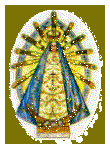
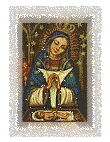 protect the people of the village of Higuey, in the Dominican Republic. The father of the young girls, who was a businessman, frequently traveled to the capital city, Santo Domingo. His daughter asked him to look for the image of Altragacia. The father promised to do so, but he had no luck in his search. Neither business people nor clergy could tell him about an image of Our Lady by that name. Disappointed at not being able to please his daughter, the man headed home.
protect the people of the village of Higuey, in the Dominican Republic. The father of the young girls, who was a businessman, frequently traveled to the capital city, Santo Domingo. His daughter asked him to look for the image of Altragacia. The father promised to do so, but he had no luck in his search. Neither business people nor clergy could tell him about an image of Our Lady by that name. Disappointed at not being able to please his daughter, the man headed home.
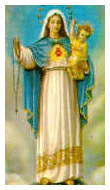
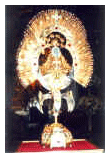 town of the brown, and a cross marked the point beyond which they could not go.
town of the brown, and a cross marked the point beyond which they could not go.